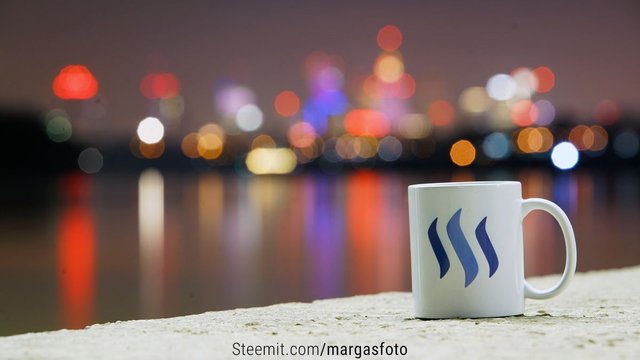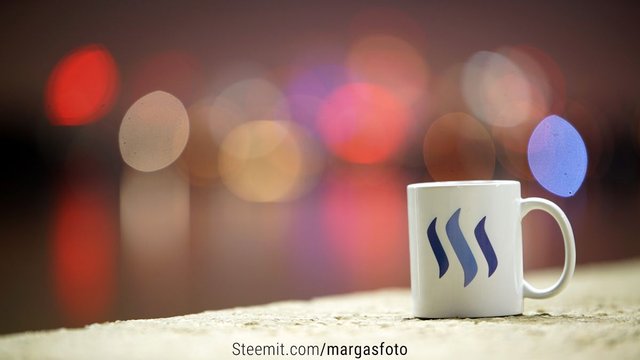Depth of field in photography - simple explanation :) Phototip #1
This time I'd like to show you what is a depth of field (DoF) and how it works on telephoto lens. For this post I went under Siekierkowski bridge in Warsaw and took the Steemit mug I got during Steem Warsaw Meetup :) Cool, isn't it? I used Sony A7R2 with Tamron 70-200 f/2.8 lens.

So basically, what is a depth of field? Putting simply, it's a range of objects in the image, which are in focus. What does it depend on? A few factors, but mainly it's all about aperture. Every lens has these strange numbers written on them starting with 'f/'. It states how wide the aperture can open. The smaller the number, the wider it opens. So, every lens has small metal blades inside, which can be more opened or closed, like on the chart below:

(via petapixel).
When only a small area in the image is in focus, the DoF is shallow. What is not in the area of focus, becomes blurry, distinguishing the subject from its background. It's often used in portrait photography, and works with the small values of aperture - e.g. f/1.4, f/2.0, f/2.8.
%20(3).jpg)
On the opposite side, there is a deep DoF, which means there are more objects in focus. It's used for example in architecture photography, when a whole subject has to be in focus. E.g. f/5.6, f/8, f//11. But watch out - if your camera or lens have some spots, they may become visible in the picture :)
%20(1).jpg)
And what are the other factors changing the depth of field? There are mainly 2:
- The size of the sensor. Smarthphones and smaller cameras have small sensors, so when you shoot photos with it probably almost everything is always in focus, except the time when you are really close to subject.
- lens field of view - the wider the lens, DoF is deeper. The bigger zoom you make (like me in those photos), DoF becomes more shallow.
Look at the examples I shot:
%20(1).jpg)
Focus on the mug, f/8.0. You can see the shapes of buildings in a background.
%20(2).jpg)
f/2.8, on 70mm - DoF is more shallow and shapes of the buildings are not visible. On the other hand, blurry lights in the background create magical effect (it's called bokeh), aren't they?

f/2.8 on 200mm - because of the bigger zoom, the DoF is even more shallow, and you can't really tell what is in the background.
And what if we close the aperture to it's maximum?
%20(5).jpg)
I conducted an experiment, set the focus in between the range of the mug and the skyline in the background. Then, I set aperture to f/32, which is the maximum for my telephoto lens. The mug is nearly in focus, and background visible, but dust and spots became more noticeable than ever :)
Thank you for reading this post and I hope you liked it!
If you have any questions, feel free to ask!
Don't forget to follow my blog for more photography stories and tips :)
interesting, i just follow you, if you wish you can follow me.
Nice model! ;-)
Unfortunately it seems that my lens decided to set f/20-ish as its favorite and it doesn't look like it is going anywhere... (jamed) :-(
Try to buy a new one. You can get those really cheap
My lens? I don't think so :-)